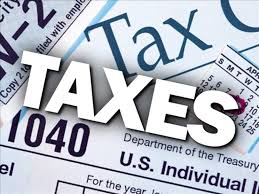 If you’re planning to file your own taxes this year, you’re not alone—research indicates around 33 percent of Americans take charge and file their own taxes every year. As you prepare to file your return, there are several things to keep in mind. Use the following tips to make this year’s filing process seamless.
If you’re planning to file your own taxes this year, you’re not alone—research indicates around 33 percent of Americans take charge and file their own taxes every year. As you prepare to file your return, there are several things to keep in mind. Use the following tips to make this year’s filing process seamless.
Make Sure You Have to File
Don’t file if you don’t need to—check in with the IRS Interactive Tax Assistant to find out whether or not you’re required to file for the 2017 tax year. The tool is simple; just answer questions about your income, filing status, and withholding patterns this year, and let the tool do the rest for you.
Keep the Filing Deadline in Mind
Typically, the tax deadline falls on April 15th, but in the event that date falls on a holiday or a weekend, the due date may change. In 2018, the filing deadline is April 16. Be sure to pen that date into your calendar and get your taxes in before that day to avoid late penalties. If you don’t think you can reasonably file by that date, file for an extension.
Review Last Year’s Returns
Take a look at all the information included in your previous federal and state tax returns. Because most of the information will remain unchanged (unless you’ve recently gotten married, had a child, or started a business), you’ll find it easier to fill out this year’s forms.
Gather All the Documentation You Might Need
Before you get started, take the time to gather any and all forms you’ll need to complete the process. This might include a Form W2 from your employer, or a 1099-MISC if you’re self-employed or a contractor.
Resolving Existing Tax Debt
If you’re already in debt with the IRS, use this time to figure out ways to get yourself out of hot water with the government agency. Hire the help of a professional adept at determining the best tax relief strategies. You may decide to apply for an installment agreement, or use Form 433-F to applying for uncollectible status. Whatever you decide on, make sure you have a strong case before presenting it to the IRS.
Don’t Forget to File State Taxes
The tax filing fun doesn’t stop at your federal return—state taxes await. Most states in the U.S. require a separate state tax return; exceptions include Alaska, Nevada, South Dakota, Florida, Washington, Wyoming, and Texas.
File On Time – Whether or Not You Can Pay
Even if you know that you won’t be able to pay off the amount you owe the IRS by tax day, it’s important that you still make an effort to file on time—and make whatever payment possible. This will ensure you don’t get hit with a late filing penalty, and will help minimize the interest you pay on the overall unpaid balance. Use a budgeting software to determine how much you can feasibly afford to hand over to the IRS come April.
File for Free with the IRS
Take advantage of the Free File program with the IRS. If you make under $66,000, you can file your federal taxes at no cost. If you make less than $66,000, you’re eligible to use the free filing software.
File Electronically
While you can still file paper returns, many taxpayers have made the switch to e-filing, and for good reason. It’s faster, more convenient, and more likely to help you catch errors before sending your return in. E-filing also ensures you’ll get your return back faster (if you’re getting one, that is).
Get Professional Help for Complicated Filing
If you’re running into snags with your filing process, or you’ve found that your tax return is more complex than you initially anticipated, don’t be afraid to invest in the services of a professional tax preparer. This upfront investment could help you see larger gains on your tax return, and ensure you stay out of trouble with the government agency.







